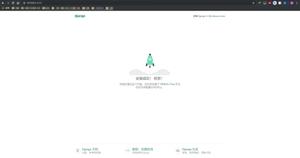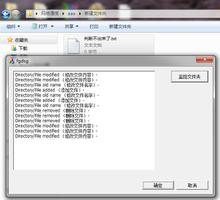Django中间件的介绍和使用

中间件是 Django 用来处理请求和响应的钩子框架。它是一个轻量级的、底层级的“插件”系统,用于全局性地控制Django 的输入或输出,可以理解为内置的app或者小框架。
在django.core.handlers.base模块中定义了如何接入中间件,这也是学习Django源码的入口之一。
每个中间件组件负责实现一些特定的功能。例如,Django 包含一个中间件组件 AuthenticationMiddleware,它使用会话机制将用户与请求request关联起来。
中间件可以放在你的工程的任何地方,并以Python路径的方式进行访问。
Django 具有一些内置的中间件,并自动开启了其中的一部分,我们可以根据自己的需要进行调整。
一、如何启用中间件
若要启用中间件组件,请将其添加到 Django 配置文件settings.py的 MIDDLEWARE 配置项列表中。
在 MIDDLEWARE 中,中间件由字符串表示。这个字符串以圆点分隔,指向中间件工厂的类或函数名的完整 Python 路径。下面是使用 django-admin startproject命令创建工程后,默认的中间件配置:
MIDDLEWARE = ['django.middleware.security.SecurityMiddleware',
'django.contrib.sessions.middleware.SessionMiddleware',
'django.middleware.common.CommonMiddleware',
'django.middleware.csrf.CsrfViewMiddleware',
'django.contrib.auth.middleware.AuthenticationMiddleware',
'django.contrib.messages.middleware.MessageMiddleware',
'django.middleware.clickjacking.XFrameOptionsMiddleware',
]
实际上在Django中可以不使用任何中间件,如果你愿意的话,MIDDLEWARE 配置项可以为空。但是强烈建议至少使用 CommonMiddleware。而笔者的建议是保持默认的配置,这有助于你提高网站的安全性。
二、 中间件最关键的顺序问题
MIDDLEWARE 的顺序很重要,具有先后关系,因为有些中间件会依赖其他中间件。例如: AuthenticationMiddleware 需要在会话中间件中存储的经过身份验证的用户信息,因此它必须在 SessionMiddleware 后面运行 。
在请求阶段,调用视图之前,Django 按照定义的顺序执行中间件 MIDDLEWARE,自顶向下。
你可以把它想象成一个洋葱:每个中间件类都是一个“皮层”,它包裹起了洋葱的核心--实际业务视图。如果请求通过了洋葱的所有中间件层,一直到内核的视图,那么响应将在返回的过程中以相反的顺序再通过每个中间件层,最终返回给用户。
如果某个层的执行过程认为当前的请求应该被拒绝,或者发生了某些错误,导致短路,直接返回了一个响应,那么剩下的中间件以及核心的视图函数都不会被执行。
三、Django内置的中间件
Django内置了下面这些中间件,满足了我们一般的需求:
Cache
缓存中间件
如果启用了该中间件,Django会以CACHE_MIDDLEWARE_SECONDS 配置的参数进行全站级别的缓存。
Common
通用中间件
该中间件为我们提供了一些便利的功能:
禁止DISALLOWED_USER_AGENTS中的用户代理访问服务器
自动为URL添加斜杠后缀和www前缀功能。如果配置项 APPEND_SLASH 为True ,并且访问的URL 没有斜杠后缀,在URLconf中没有匹配成功,将自动添加斜杠,然后再次匹配,如果匹配成功,就跳转到对应的url。 PREPEND_WWW 的功能类似。
为非流式响应设置Content-Length头部信息。
作为展示的例子,这里额外贴出它的源代码,位于django.middleware.common模块中,比较简单,很容易读懂和理解:
class CommonMiddleware(MiddlewareMixin):""" 去掉了doc """
response_redirect_class = HttpResponsePermanentRedirect
def process_request(self, request):
# Check for denied User-Agents
if 'HTTP_USER_AGENT' in request.META:
for user_agent_regex in settings.DISALLOWED_USER_AGENTS:
if user_agent_regex.search(request.META['HTTP_USER_AGENT']):
raise PermissionDenied('Forbidden user agent')
# Check for a redirect based on settings.PREPEND_WWW
host = request.get_host()
must_prepend = settings.PREPEND_WWW and host and not host.startswith('www.')
redirect_url = ('%s://www.%s' % (request.scheme, host)) if must_prepend else ''
# Check if a slash should be appended
if self.should_redirect_with_slash(request):
path = self.get_full_path_with_slash(request)
else:
path = request.get_full_path()
# Return a redirect if necessary
if redirect_url or path != request.get_full_path():
redirect_url += path
return self.response_redirect_class(redirect_url)
def should_redirect_with_slash(self, request):
if settings.APPEND_SLASH and not request.path_info.endswith('/'):
urlconf = getattr(request, 'urlconf', None)
return (
not is_valid_path(request.path_info, urlconf) and
is_valid_path('%s/' % request.path_info, urlconf)
)
return False
def get_full_path_with_slash(self, request):
new_path = request.get_full_path(force_append_slash=True)
if settings.DEBUG and request.method in ('POST', 'PUT', 'PATCH'):
raise RuntimeError(
"You called this URL via %(method)s, but the URL doesn't end "
"in a slash and you have APPEND_SLASH set. Django can't "
"redirect to the slash URL while maintaining %(method)s data. "
"Change your form to point to %(url)s (note the trailing "
"slash), or set APPEND_SLASH=False in your Django settings." % {
'method': request.method,
'url': request.get_host() + new_path,
}
)
return new_path
def process_response(self, request, response):
# If the given URL is "Not Found", then check if we should redirect to
# a path with a slash appended.
if response.status_code == 404:
if self.should_redirect_with_slash(request):
return self.response_redirect_class(self.get_full_path_with_slash(request))
if settings.USE_ETAGS and self.needs_etag(response):
warnings.warn(
"The USE_ETAGS setting is deprecated in favor of "
"ConditionalGetMiddleware which sets the ETag regardless of "
"the setting. CommonMiddleware won't do ETag processing in "
"Django 2.1.",
RemovedInDjango21Warning
)
if not response.has_header('ETag'):
set_response_etag(response)
if response.has_header('ETag'):
return get_conditional_response(
request,
etag=response['ETag'],
response=response,
)
# Add the Content-Length header to non-streaming responses if not
# already set.
if not response.streaming and not response.has_header('Content-Length'):
response['Content-Length'] = str(len(response.content))
return response
def needs_etag(self, response):
"""Return True if an ETag header should be added to response."""
cache_control_headers = cc_delim_re.split(response.get('Cache-Control', ''))
return all(header.lower() != 'no-store' for header in cache_control_headers)
以上是 Django中间件的介绍和使用 的全部内容, 来源链接: utcz.com/z/523305.html







